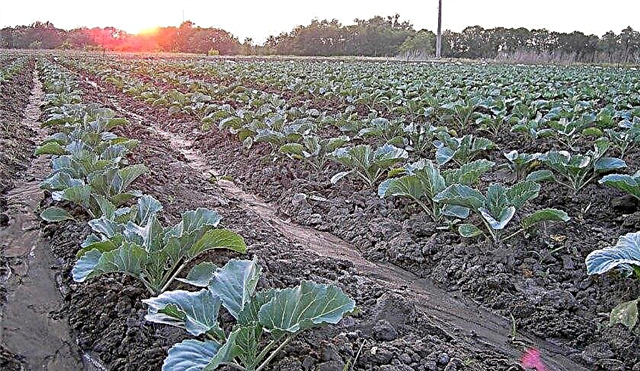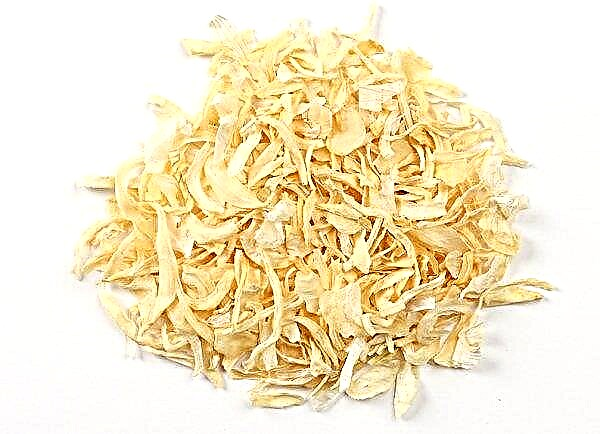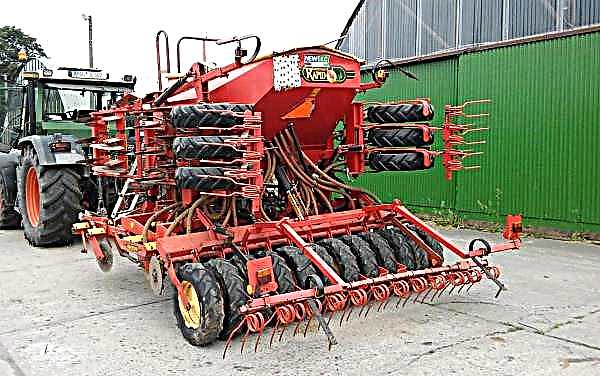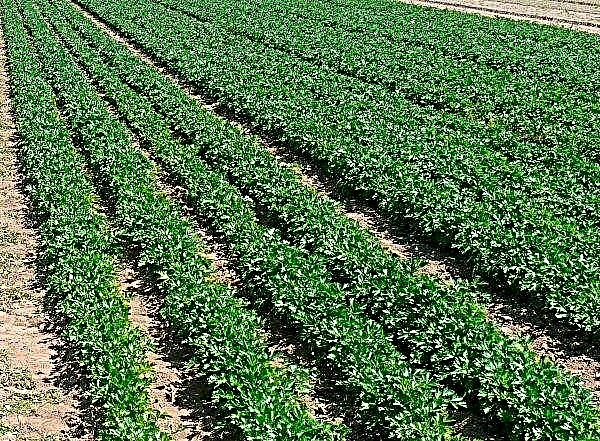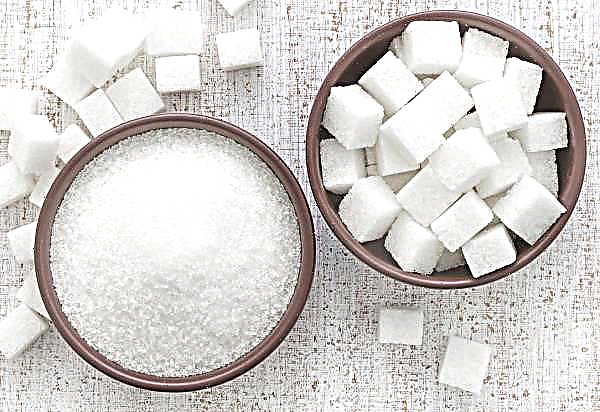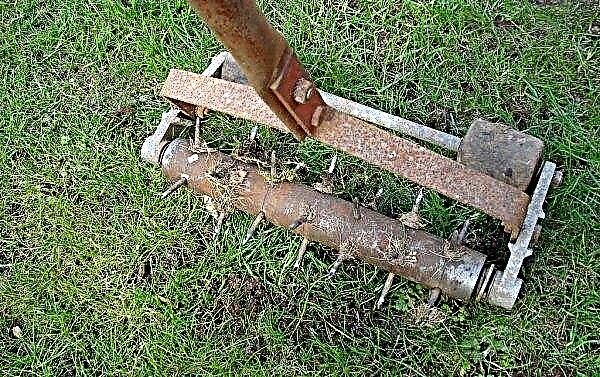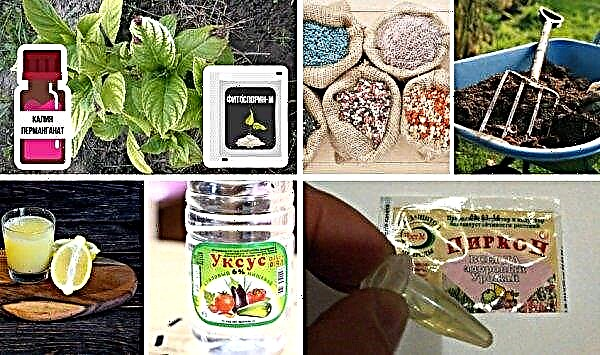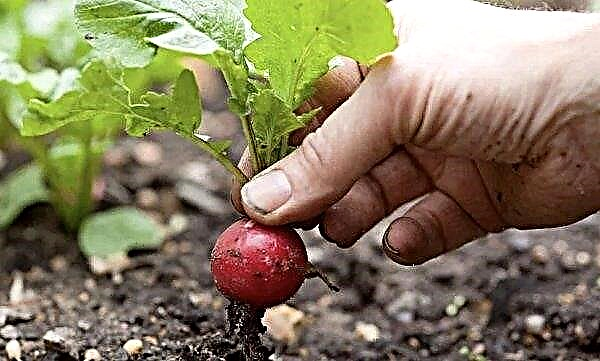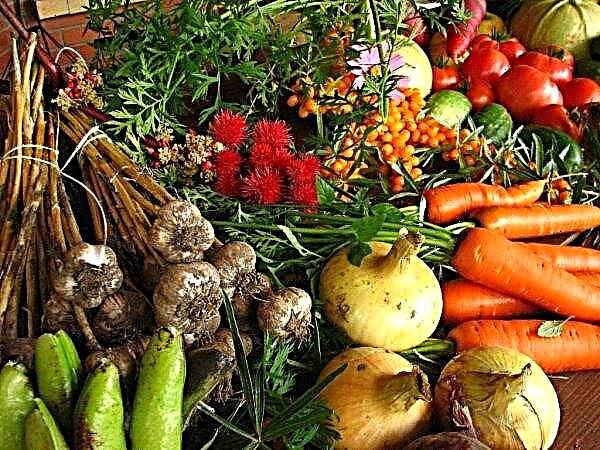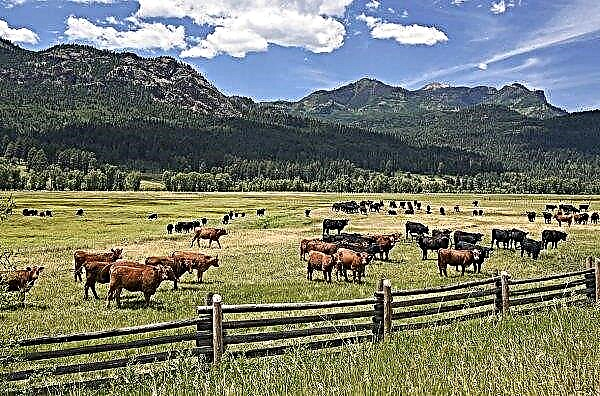Cabbage is one of the main elements of a vegetable diet. It is important for those who grow this wonderful vegetable to get the maximum yield. To do this, you need to know when to plant, where to plant and how to properly care. The future harvest depends on compliance with the basic rules of planting and further care for seedlings.
Optimal timing for growing
Cabbage is a fairly hardy vegetable that can be planted from spring to early summer. In addition to individual varieties, the ripening periods of cabbage are also distinguished: early, middle and late. The exact time when to sow seeds for seedlings is calculated based on the 45-50-day-old seedlings age before planting in the ground.
Dates when white cabbage seeds are planted:
- last decade of March - for early varieties;
- the last decade of April - for medium grades;
- the first half of April is for late varieties.
- first decade of May - early cabbage is planted;
- the last week of May is average;
- end of May, beginning of June - late.
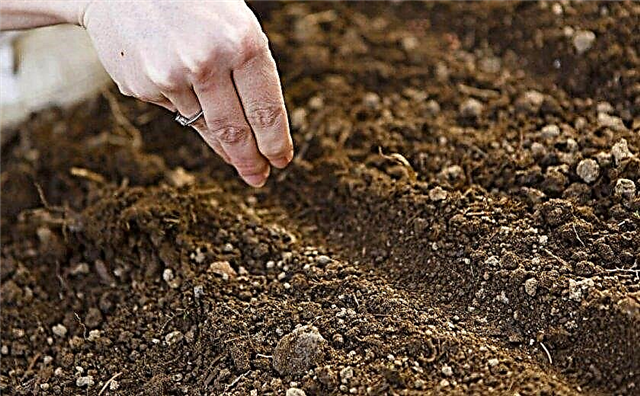
In general, planting dates are tied to the last spring freeze. Count from him 6-8 weeks, this will be the date of planting seeds for seedlings. A vegetable prefers cool temperatures, so the possible time period for sowing seeds in the soil is determined 2 weeks before the last freeze.
For red cabbage and kohlrabi, the planting dates will be the same. Broccoli can grow from spring to fall.
Its growing season is 100 days, which determines the timing:
- in the spring - 2 weeks before the last freeze;
- in summer or autumn - 100 days before the first frost.
The timing when to plant Chinese cabbage seeds is 4-6 weeks before the last spring freeze. You can sow seeds for seedlings with transplanting them to a permanent place after 30 days. In regions with mild winters, it is permissible to grow Chinese cabbage in late summer for late autumn harvest.
Did you know? Cabbage is cultivated longer than any other vegetable. To be precise, more than 6000 years! It is believed that they first began to grow it in Shaanxi province, China, about 4000 BC. e.
If you are fond of folk calendars with the best planting dates, then you need to take into account that calendars are distributed over a large territory, with different climatic conditions, so they contain average dates and do not have the latest data on the weather conditions that have settled down in you. But average air temperatures have changed a lot even over the past 10 years, so determining when there will be favorable days is better based on your own observations and data on average temperatures in your area.
Planting cabbage in open ground seedlings
Seedlings ready for planting are seedlings with 4–5 true leaves that have reached a height of 15 cm. If you have more leaves, the seedlings have grown. In this case, the lower leaves are torn off and, when planting, the trunk is deepened deeper. The best landing day for planting in the ground is not sunny and with moderate air temperature.
Basic landing rules:
- Cabbage is planted with a distance between individual seedlings of 30-50 cm. The larger the heads, the greater the distance.
- Be sure to mulch the crops. This will help retain moisture and regulate soil temperature.
- Cabbage needs a very nutritious soil, so fertilizer must be applied.
- Practice crop rotation, this will help reduce pest populations and destroy phytopathogens, which can reduce yields or kill plants.
- Avoid planting cabbage next to tomatoes and strawberries.
- It is recommended to be planted next to legumes and cucumbers.
- It is advisable to plant seedlings on the site after potatoes, beans, tomatoes or after strawberries.
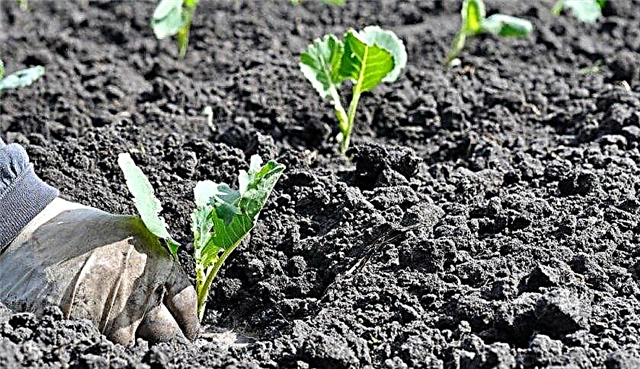
Planting seedlings
In regions with a short summer or cold spring, it is recommended to plant seeds in containers, and then transplant them into the ground. If you live in the southern regions, you can determine how to plant cabbage: seeds or seedlings - at your discretion.
When growing seedlings, you will need to prepare seeds, containers for growing, soil and seed treatment. Seeds will germinate for about two weeks. They need to be watered periodically and the microclimate controlled.
Seed selection and preparation
Seeds are preferably treated against bacteria and viruses. This is especially true if you do not know if they have been processed before.
They are also practiced by growth stimulants. To do this, follow these steps:
- Soak them in hot water (+ 60 ° C) for 5-10 minutes. High temperature is detrimental to most bacteria.
- Processed with a growth stimulant to increase the percentage of germination, ensure uniform development, improve plant endurance.
Did you know? In the scrolls of ancient China (approximately 1000 BC), cabbage is advertised as a magic cure for baldness sufferers. It is not known whether this is so. But cabbage is really full of nutrients that contribute to good health.
Preparation of soil for seedlings
Cabbage needs a very nutritious soil, so it is advisable to mix the following composition:
- 1/3 of good garden or leaf soil;
- 1/3 of rotted manure;
- 1/3 of the sand.
Sand is necessary if the soil is clay and dense. This will make it easier. Normally, cabbage needs soil with an acidity of about 6.5–6.8 pH. You can verify this using special test strips. If your garden soil is acidic, then it’s okay: manure will reduce acidity.
Seeding and seedling care
Containers for seedlings are filled with prepared soil mixture. As containers use improvised materials: plastic yoghurt cups, wooden boxes or seed containers purchased at the store.
How to sow seeds:
- Moisturize the soil mixture.
- Place seeds on the surface in rows at a distance of 5 cm from each other.
- Seeds can not be deepened, but simply sprinkled on top with earth or sand. The layer thickness is about 1 cm.
- Covering the container with seeds with glass or cling film is necessary to create conditions for accelerated germination of seeds. They will germinate for about 2 weeks.
- Monitor carefully the level of humidity and the quality of the plants.
- If necessary, you can thin out the seedlings as they grow. Leave the strongest sprouts.
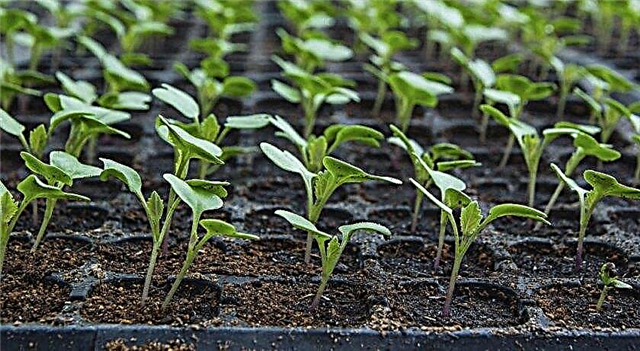
In uneven lighting, fluorescent light is added so that the seedlings do not stretch. Daylight hours should last at least 15 hours. When the first true leaf appears, the seedlings dive. Diving is a procedure for transplanting a young plant in order to strengthen the root system. During the dive, each seedling is planted in a separate cup for further cultivation. Together with this, top dressing is carried out. 6 g of superphosphate and 1 g of urea are dissolved in 2 l of water. Top dressing is introduced into the soil. A week before planting seedlings in the ground, she is fed again.
Preparation of a plot for planting seedlings
Before planting seedlings on the beds, you need to prepare the soil. Its texture is not critical, but early cabbage grows best on sandy soil, and later species prefer a heavier, moistened one. 3 weeks before planting, compost is required and the soil is dug up to remove weeds. Use mulch on the beds after planting to maintain soil moisture.
Choose a sufficiently sunny area to land. But so that direct sunlight falls on the plants only part of the day (about 3-4 hours). Seedlings are planted a little deeper than they grew in the apartment.Important! Due to a root system (keel) disease that spreads in acidic soils and can affect plants, soil acidity must be kept above 6.8 pH.
Planting seedlings in open ground
When the seedlings reach a height of about 7 cm, you need to plant it in the ground. By this time, 3-5 full leaves should form on the plants. The distance between the individual heads is: 15-30 cm between rows and 30-60 cm between plants. Long distances make it possible to get more goals, but small cabbage is tastier. To get both of them, land in 2 stages with an interval of 2 weeks.
Seedling Planting Technology:
- Dig in the beds.
- Make a trench about 5 cm deep.
- Pour.
- Place the plants in the trench so that the trunk is a little more buried in the soil than in the seedling period.
- Compact the soil around the trunk. This is a mandatory event that promotes the growth of roots.
- Treat the soil so that a flat surface is obtained.
- Lift the soil between the rows.

Planting cabbage in open ground with seeds
The sprouting method is convenient for the southern regions. An ideal place to plant would be an area in which the vegetable receives enough light and grows on nutrient ground. For sowing in a pre-treated area, dig trenches, introduce manure, compost or other fertilizers.
For a good harvest, it is important:
- choose the right site;
- provide a suitable soil for the variety;
- arrange proper care.
Did you know? Red cabbage — It is an excellent natural dye. Try painting Easter eggs in her juice. You can achieve different shades — from blue to intense purple.
Seed selection and preparation
If you collect seeds from your plants, then save them from at least 5 different plants. This will help ensure almost 100% germination. When buying seeds in the store, it is also recommended to choose 3-5 varieties.
Microorganisms and viruses are very small, so you must always disinfect the seeds. To do this, they are treated at elevated temperature. It can be hot water (+ 60 ° C) or a lamp. Also, the seeds are soaked in a solution of potassium permanganate 3% for 30-60 minutes.

Land preparation for sowing seeds
Cabbage grows well in fertile soil with lots of organic matter. To increase fertility, add a compost bucket to 1 m² of soil. This is done 2 weeks before landing.
The presence of pests in the soil from last season can adversely affect productivity. To protect seedlings, the soil is decontaminated. Boiling water is the easiest and most effective way to control pests. Also apply soil treatment with a solution of potassium permanganate.
Did you know? The soil consists of a small amount of components: minerals (45%), water (25%), air (25%), organic residues (5%). Mineral wealth of the soil — it is sand, clay and silt mixed in different proportions.
Features of sowing in open ground
The beds need to be prepared in the same way as for planting seedlings:
- Dig the soil thoroughly to destroy the root system of weeds.
- Make beds.
- Fertilize at the bottom. It can be rotted manure or compost. Fertilizer is covered with a small layer of soil (1 cm).
- Moisten the soil.
- Plant seeds to a depth of 3 cm with a minimum distance of 40 cm between individual rows.
- Sprinkle the seeds with soil and cover the garden bed with a film to accelerate germination.
Video: Sowing cabbage in the open ground
Features cabbage care
Cabbage is tolerant of cool weather, so you can grow it in the soil from early spring to late autumn. Sow the seeds according to the planting dates of the selected variety.
Some features of cabbage care:
- The soil of the site is loosened to a depth of not less than 0.3 m. This measure allows the root system to develop better.
- Apply organic fertilizer.
- Take out the seedlings every day in the open air so that the plants can adapt to new living conditions. To do this, they will need a 2-week hardening program.
- The mulching layer around the plants isolates the soil from pests, retains moisture and slows the release of nutrients from the soil.
- Provide weekly watering to the plants. Apply water evenly so that all roots have equal access to water supply.
- Do not pour water on plants, so as not to create conditions comfortable for phytopathogens.
- Regular watering is important. It prevents the accelerated growth and splitting of cabbage heads due to an excess of water after a period of drought.
- Regularly remove weeds around the cabbage.
- Constantly check the leaves and soil around the cabbage for pests. If it is found, immediately take measures so that they do not destroy your crop.
- Fertilize when heads begin to form.
- Organic fertilizers are applied for top dressing: manure, humus. You can also use synthetic fertilizers: ammonium nitrate, potassium chloride, superphosphate.
Important! Visual signs of lack of fertilizer — leaf color. If they turn yellow and fall off — the plant lacks nitrogen. Excessive leaves and no formed head — a lot of nitrogen. Watch cabbage to notice problems in time and fix them.
Useful tips gardeners
Those who have been growing cabbage for many years now have a series of special rules that they follow. Some of them relate to the selection of varieties, while others relate to crop rotation characteristics.
We have compiled and summarized some of them:
- Seeds grow seed companies in a greenhouse. Read the manufacturer information on the packaging and buy only if the climatic zone of the manufacturer matches yours. This means that cabbage will be better acclimatized for growing in your area.
- If you do not know grade, then choose several so that you are not left without a crop in case of poor germination of seeds.
- Try to plant different in terms cabbage, so you will be provided with a crop from spring to autumn.
- Follow crop rotation rules. Plant cabbage after autumn planting of legumes. They “know” how to fix soil nitrogen and save it for spring sowing.
- When replanting, remove weak seedlings.. They will not give a good harvest.
- For the right fertilizer application analyze the composition of the soil. Any plant needs nitrogen, potassium and phosphorus. Cabbage perfectly suits rotted manure. Also, plants are well related to the introduction of 28% nitrogen 2, 4 and 6 weeks after planting. Increase the rate gradually as the cabbage grows from 4 to 10 g. Stop applying nitrogen if the cabbage has formed heads. This may cause them to crack.
- TO watering can be treated negligently at the initial stage of plant development. But from the moment of formation of heads, it should be regular.
